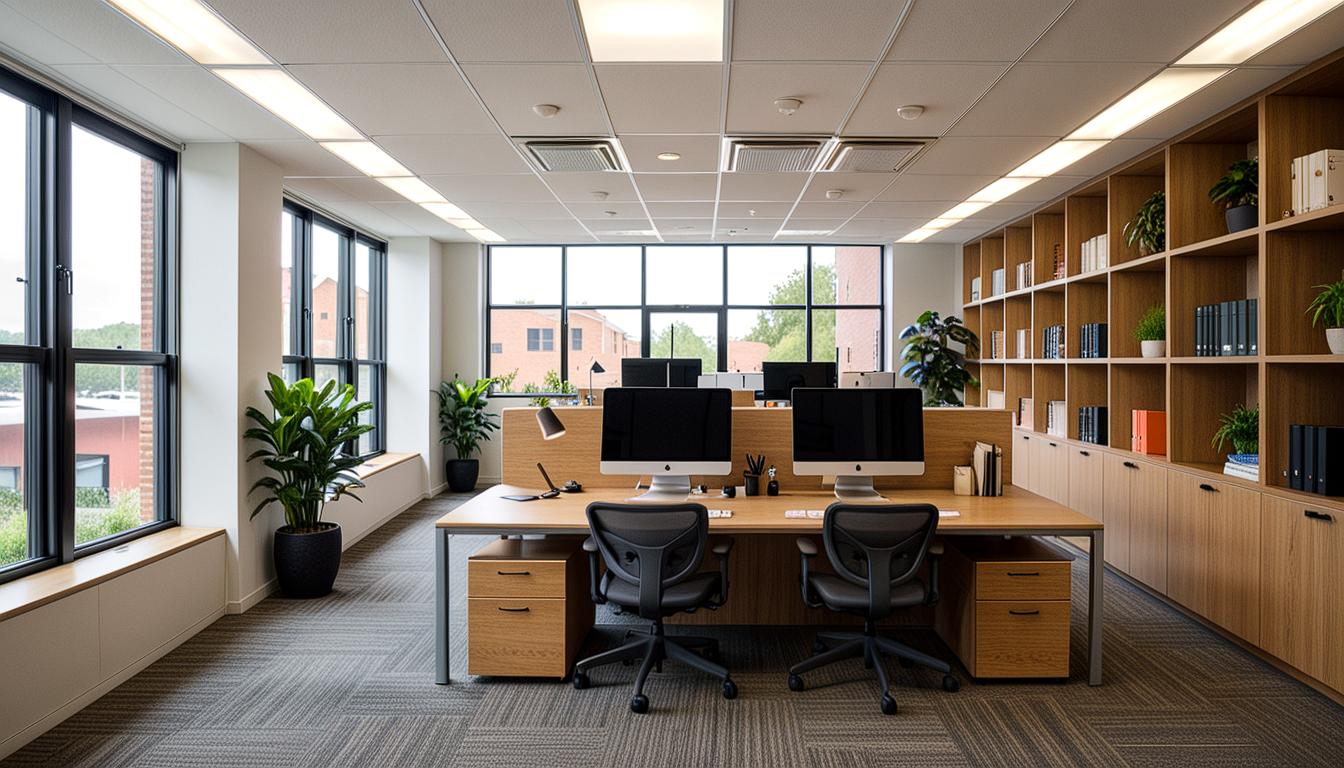Designing Your Office: Tips for Desk Placement
1. Understanding the Principles of Ideal Desk Placement
The successful design of an office space and desk positioning is rooted in three key principles. Starting with the basic, it’s essential to avoid setting up your desk facing a wall. This seemingly small detail can make a significant impact on your sense of freedom and productivity while making you feel confined or boxed in.
The second principle of effective desk placement is to prevent what’s popularly known as “cubicle paranoia.” This situation occurs when your back is turned to the door or entrance, causing feelings of unease or vulnerability when people approach from behind.
Lastly, maintaining a balance of concentration and control in the workspace is crucial. For this, it’s suggested your desk faces perpendicular to the door. Bonuses to this position include non-disruptive visibility of the door without the distraction every time someone passes by.
2. Adapting Desk Placement Principles Depending on Office Layout
Based on your office’s unique layout, several factors may influence desk positioning. For instance, L-shaped or U-shaped desks might necessitate placement against a wall. Even in this scenario, workspace dynamics can be maintained by ensuring the seating space doesn’t face the wall or entrance.
A useful strategy for arranging desks against walls, particularly with an L-shaped configuration, is to position the monitor in the corner. This placement approach optimizes space and maintains as much visibility towards the entrance as possible.
3. Positioning of Office Equipment on Your Workspace
The organization of the office equipment on your desk plays crucial role in creating a productive workflow. A “left to right” placement strategy can be very effective. With this approach, the equipment stays on the left-hand side, and the right side is kept clear for visitors. The result is an inviting and organized workspace.
4. How to Design a Welcoming Home Office Space?
Home office setups demand a deep understanding of personal needs and the best use of available space. Key considerations while developing a home office include ensuring privacy, efficient cord management, and adequate storage.
Additional seating spaces can increase the home office’s versatility, and they play a crucial role when the space is shared. Balancing different style preferences and functional needs is vital for a shared home office setup.
As per Feng Shui, an ideal desk placement is against a wall with a clear view of the door, but not directly in line with the door. Utilizing natural light resourcefully and adding window treatments as necessary can help reduce screen glare and improve productivity.
5. Lighting and Storage Solutions for your Office
A mindful desk placement can only go so far in improving workspace efficiency. Storage and lighting considerations play a significant role in finalising desk size and position. Also, layering lights using a combination of overhead lights, task lighting on the desk, and mellow ambient lights can significantly enhance working comfort and efficiency.
FAQ Section
| Question: | Answer: |
| Where should I position my desk in the office for optimal productivity? | It is advisable to position your desk in such a way that it faces perpendicular to the door or entrance for a balance of concentration and control. |
| What desk layout can help to maximize office space and ensure a welcoming environment? | An L-shaped or U-shaped desk setting where the monitor is positioned in the corner can help maximize space while ensuring you don’t face the wall or away from the entrance. |
| How should I place my equipment on my desk for a good workflow? | It is recommended to place your equipment on your left-hand side and keep the right side open for visitors to maintain clear and welcoming desktop. |
| What is the best desk placement for a home office according to Feng Shui? | Feng Shui recommends placing your desk against a wall with a clear view of the door, but not directly in line with it. |
| What lighting setup is best for a home office? | For efficiency, it is recommended to layer your lighting using a combination of overhead lights, task lighting on the desk, and ambient lights where needed. |
In all, striking a balance between aesthetics, functionality, and comfort is critical in designing and positioning desks in an office space. Focusing on these aspects can cultivate a more productive and amicable working environment.





